25 Feb Dickinsonia
Dickinsonia
This article covers “Daily current events “and the topic is ‘Dickinsonia’ which is in news, it covers “History” In GS-1, and the following content has relevance for UPSC.
For Prelims: Dickinsonia
For Mains: GS-1, History, Details on Dickinsonia
Why in news: Scientists claimed the startling finding of extinct animal fossils from India’s Bhimbetka Rock Shelters in 2021, but it turned out to be a false alarm.
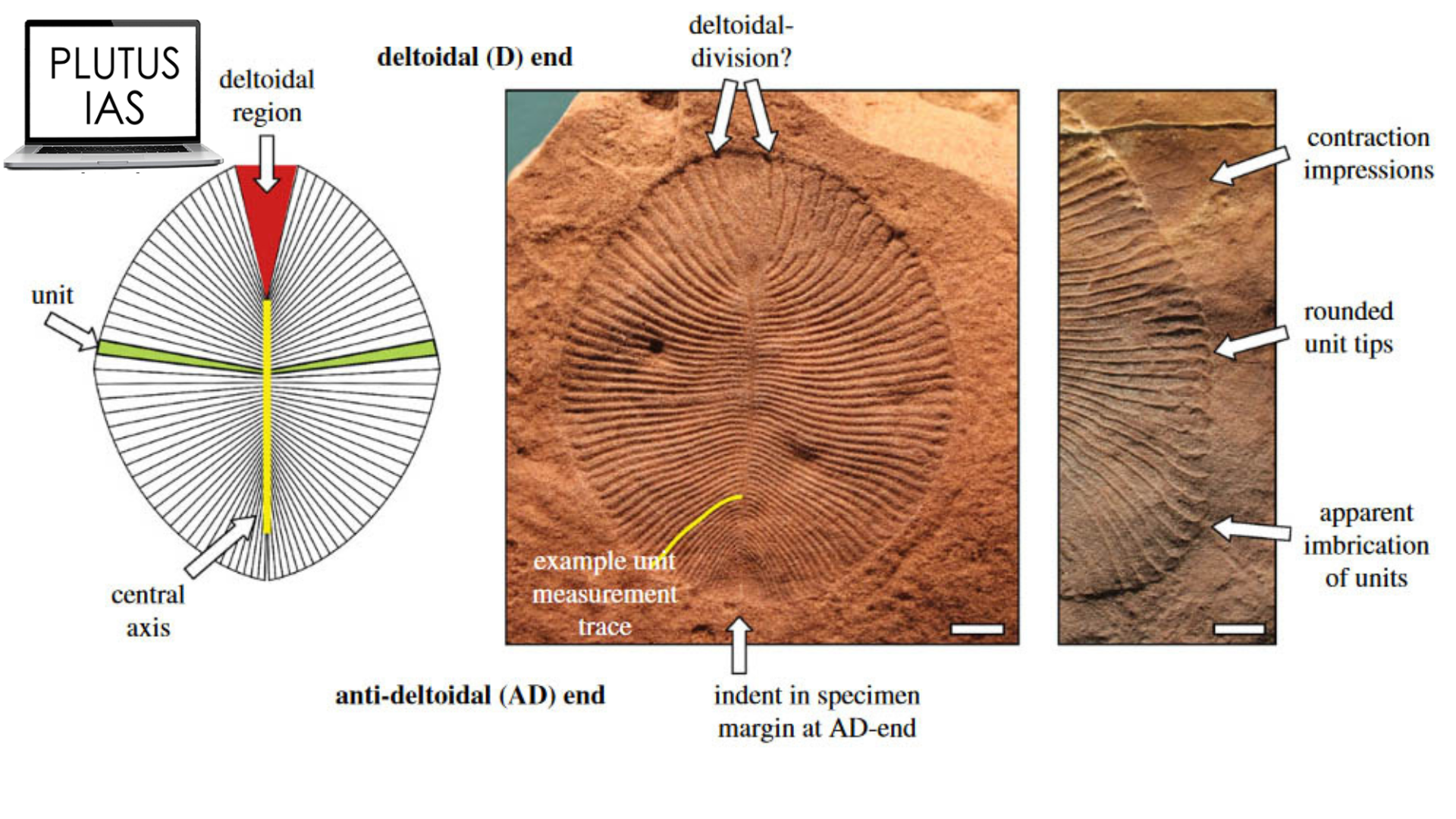
Dickinsonia
About Dickinsonia
- A creature called a Dickinsonia existed in a cave at least 538 million years ago.
- The Dickinsonia fossils found in various parts of the world show that they had a flat, somewhat circular, or oval shape.
- From a central column, it features rib-like elements that extend outward.
- Dickinsonia has been discovered in Vendian rocks from north Russia and South Australia.
- Because of its apparent resemblance to one genus of existing polychaetes, Spinther, it is frequently mistaken for an annelid worm.
- The “deltoidal region”—a huge, wedge-shaped segment at the blunt end—and several inflated segments or “units” that are mirrored across the central axis make up the body of the object.
Reason for Confusion
- Paleobiologists generally agree that the vegetation and fauna of the Ediacaran period, which lasted from 635 to 530 million years ago, “featured early animals and macroscopic eukaryotes living in a maritime habitat.” The Maihar sandstone, which makes up the strata of Bhimbetka, is an unusual coastal terrestrial deposit that appears to include fossils.
- Since Dickinsonia is thought to have existed between 555 and 545 million years ago, it is “an iconic member” of the Ediacaran epoch and “an important age marker.” The mystery surrounding the age of the Upper Vindhyan rocks would have been resolved as a result, and publishing its finding would have carried “the prestige of a ‘first report’ from India.”
- To be mistaken for a fossil, the beehive needed to have undergone exactly the proper amount of degradation. Any more or less, as has occurred in the two years following the report, and the similarity vanishes. Perhaps one of the reasons others hadn’t seen it elsewhere is because of its transient nature.
Additional Information on Dickinsonia
Bhimbetka
- On the southernmost edge of the plateau in central India, the Rock Shelters of Bhimbetka are situated in the foothills of the Vindhyan Mountains.
- Paintings are found in caves that are about 30,000 years old.
- The Ratapani Wildlife Sanctuary includes sandstone outcrops.
- The origin of the name of the rock shelters, Bhimbaithaka, the seat of Bhima, one of the Pandava brothers from the Mahabharata, is a fascinating legend in and of itself.
- It has more than 750 rock shelters, more than a hundred of which are painted with images of animals and people in tones of green, red, white, brown, and black.
- The earliest of these depict scenes from the Upper Paleolithic and Mesolithic hunter-gatherer cultures.
- The most heavily decorated caves may have let in more sunshine and were frequently empty, according to the evidence. This further corroborates the widely held view that these paintings were not created with the intention of beautifying or embellishing human dwellings.
- Archaeologists have been able to determine the historicity of these cave paintings thanks to the fact that many of them overlap, indicating that the rocks were painted on repeatedly and over several historical eras.
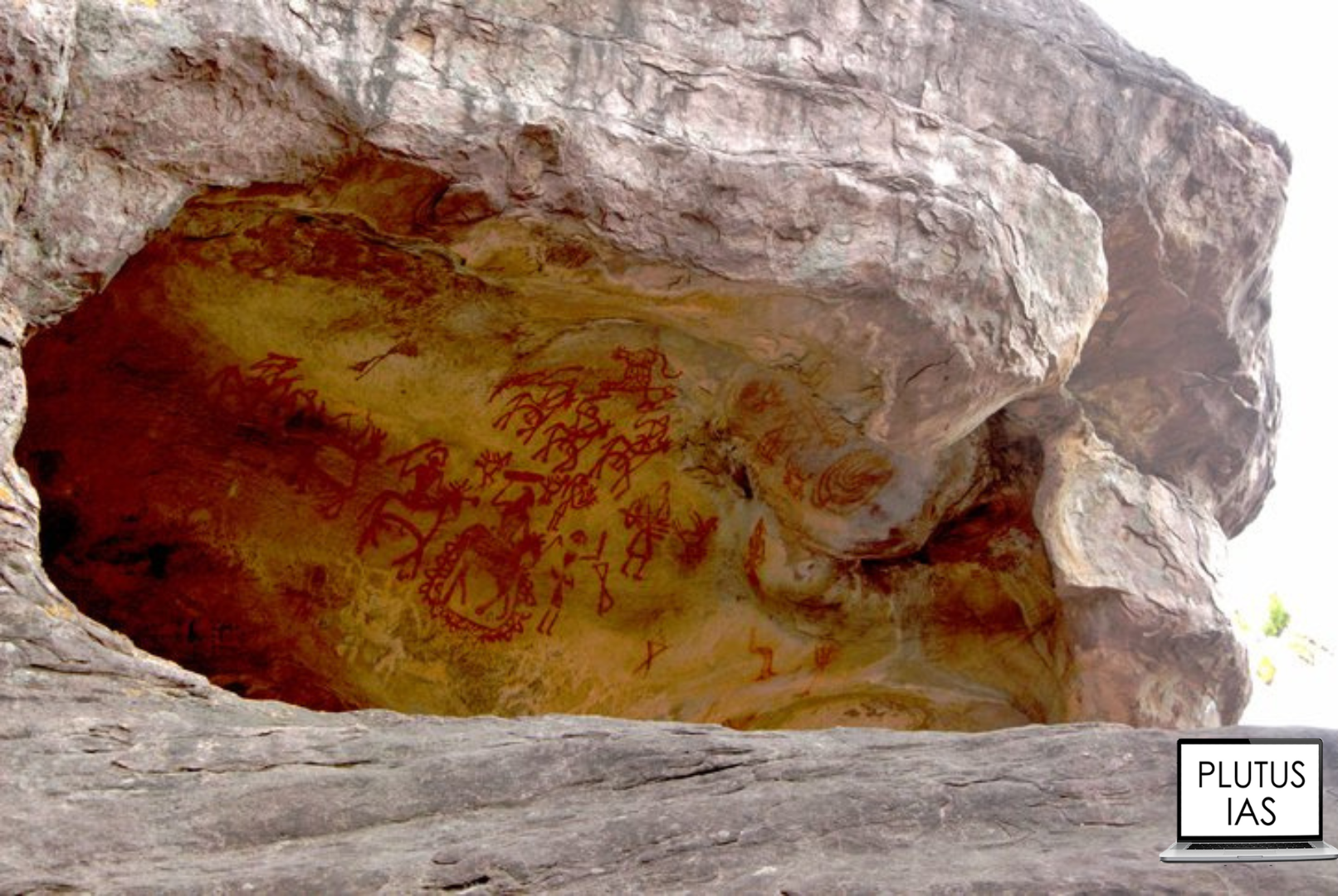
Bhimbetka Caves
Early Paintings
- Early Bhimbetka paintings primarily represent wild animals including elephants, gaur, a local species of a wild bull, chital deer, monkeys, wild boars, and stags as well as hunting scenes with people wearing headgear and bows and arrows.
Also, there are representations of a variety of scenes, such as rituals, women exterminating rodents from tunnels, and men and women hunting for honey and fruits.
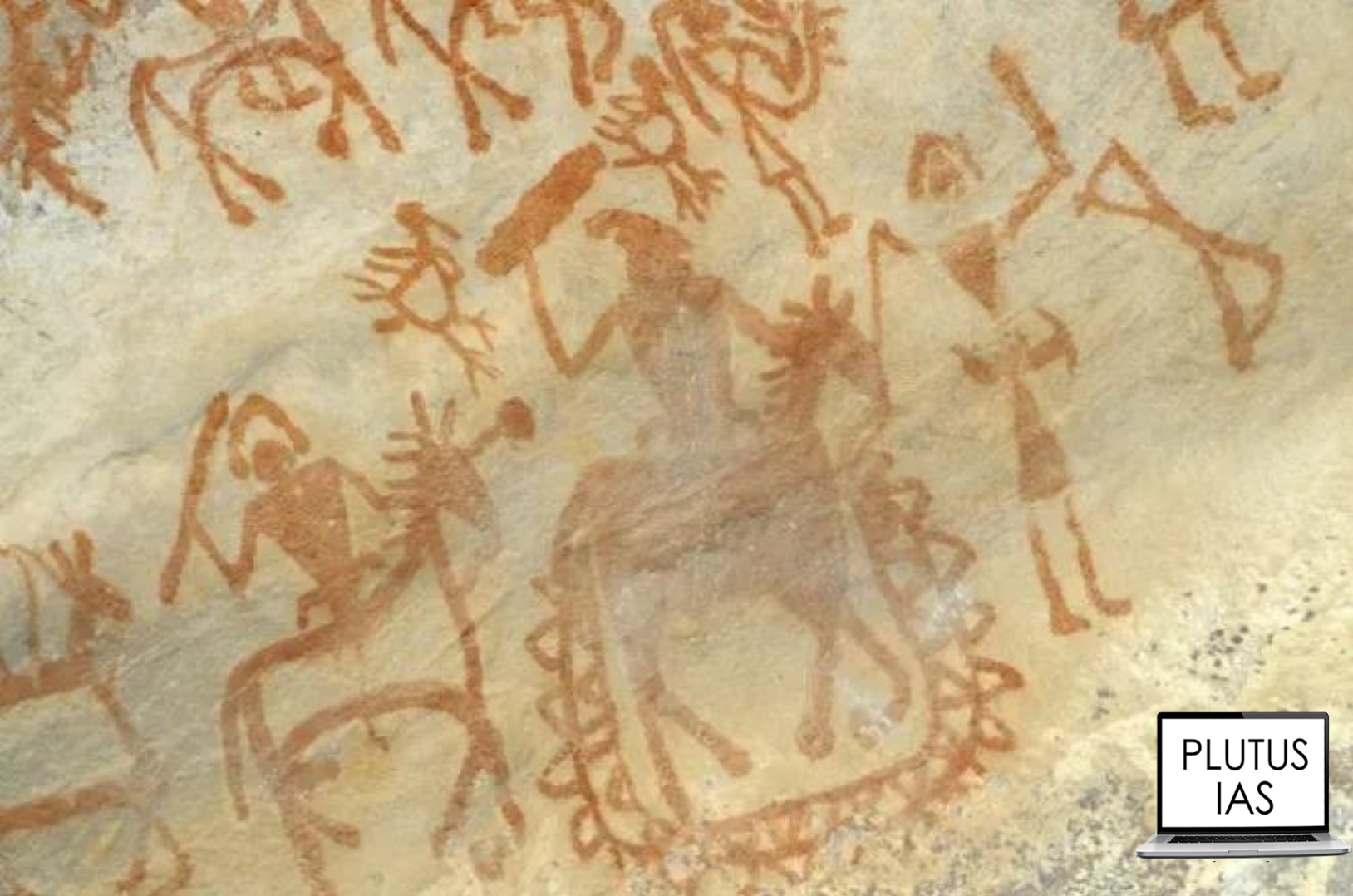
Bhimbetka cave paintings
Later Paintings
- From the Historic era onward, later paintings show processions, battle scenes with swords, shields, daggers, and group rites. Animal figures are conspicuously absent from these paintings and, when they do occur, are excessively painted.
- It has also been stated that the motifs utilized in some of these later paintings indicate the religious influence of Hinduism or Buddhism.
- There are unmistakable images of gods like Ganesha and Shiva, as well as the Mother Goddess and symbols like the Trishul and swastika, in some.
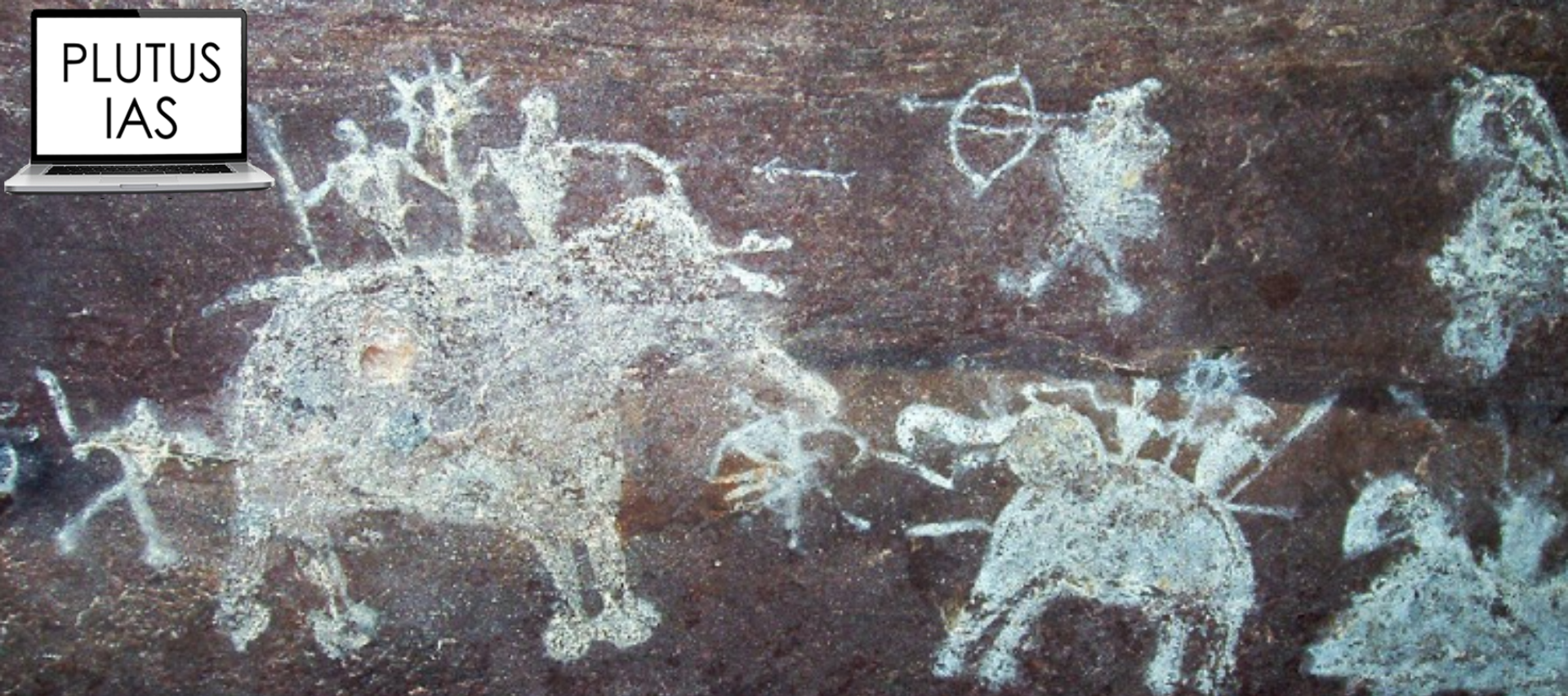
Bhimbetka paintings
Boar Rocks
- This notable rock shelter, also known as Bhimbetka Shelter III F-19 and Bull Rock, is one of the hundreds of structures that make up the Bhimbetka cave paintings. Its name comes from a picture of a big, boar-like animal.
- The animal in the painting has what appears to be fur on its back, a large head, and horns. It appears to be charging toward two people—a crab and a human—on the left.
- The painting is known for its size—it is over 1.2 meters tall and 0.87 meters wide—and its deep red color, which is thought to have been produced by hematite.
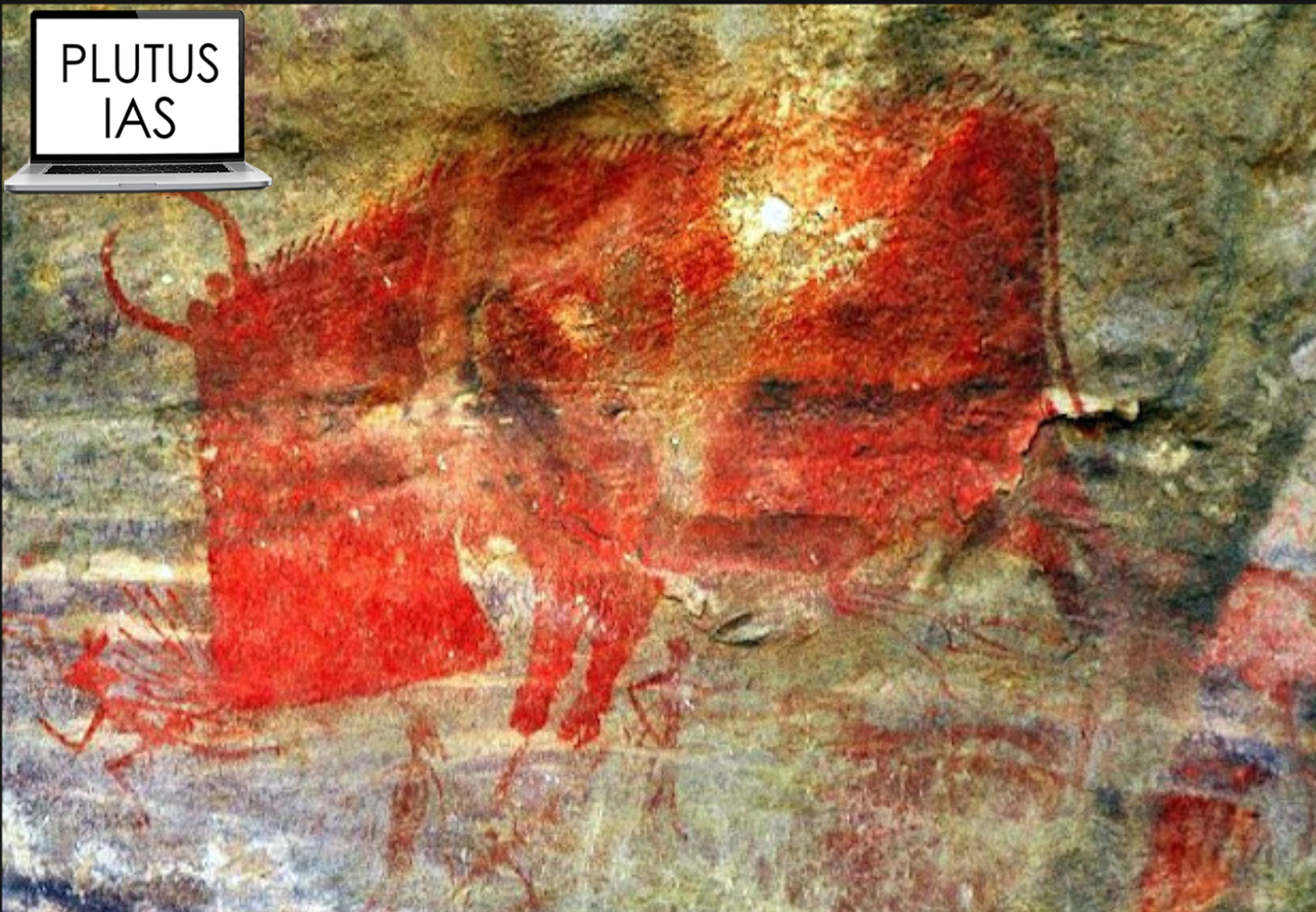
Bhimbetka rock shelters
Source:
PLUTUS IAS CURRENT AFFAIRS 25th FEB 2023
Daily Current Affairs for UPSC
The current affairs topic described above talks about Dickinsonia. The article is based on Indian History. The aspirants also get details on Additional Information about Dickinsonia. Get such kinds of the latest and best daily current Affairs for the UPSC examination free of cost. Also. read weekly and monthly current affairs today for UPSC exam preparation.



No Comments